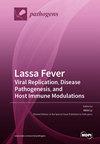闻起来像抗寄生虫药--葡萄牙狗的胃肠道流行率、负担和多样性
IF 3.3
3区 医学
Q2 MICROBIOLOGY
引用次数: 0
摘要
世界各地都有关于抗蠕虫药耐药性的记录,但很少有关于狗产生耐药性的报道。收容所的狗是研究肠道蠕虫和评估其对抗原化合物潜在抗药性的绝佳机会。带着这两个目标,我们从葡萄牙 18 个城市的 19 个收容所和 11 个私人教师那里收集了 361 份狗的粪便样本。在驱虫前和驱虫后 13 天,使用 Mini-FLOTAC 对这些样本进行了分析。计算出粪便中虫卵数量减少的百分比。在收集到的样本中,有 22.4% 发现了寄生虫:秃尾毛滴虫(10.5%)、犬弓形虫(8.0%)、锚鞭毛虫科(6.4%)、椪鞭毛虫(0.8%)、犬双鞭毛虫(0.6%)和大肠杆菌科(0.3%)。前三种线虫的感染强度最高(分别为每克 2900、1325 和 1265 个卵)。在第二次粪便采集中,20.8%的样本中存在寄生虫。在 16.2% 和 6.9% 的样本中,非苯达唑+嘧菌酯+吡喹酮和吡喹酮+芬苯达唑两种抗蠕虫药对秃尾蝇和蝇蛆科寄生虫无效。确定的寄生虫都有可能是人畜共患的。这项研究首次提出了秃尾蝇对抗虫药的潜在抗药性。本文章由计算机程序翻译,如有差异,请以英文原文为准。
Smells Like Anthelmintic Resistance—Gastrointestinal Prevalence, Burden and Diversity in Dogs from Portugal
Anthelmintic resistance has been documented worldwide, but few cases have been reported in dogs. Shelter dogs are a great opportunity to study intestinal helminths and assess their potential resistance to anthelmintic compounds. With these two goals in mind, 361 faecal samples were collected from dogs in 18 municipalities in Portugal, from 19 shelters and 11 private tutors. These samples were analysed using the Mini-FLOTAC before and 13 days after deworming. The percentage of faecal egg count reduction was calculated. Parasitic forms were identified in 22.4% of the samples collected: Trichuris vulpis (10.5%), Toxocara canis (8.0%), members of the family Ancylostomatidae (6.4%), Toxascaris leonina (0.8%), Dipylidium caninum (0.6%) and members of the family Taeniidae (0.3%). The first three nematode parasites showed the highest intensity of infection (2900, 1325, and 1265 eggs per gram, respectively). In the second faecal collection, parasites were present in 20.8% of the samples. The anthelmintics febendazole + pyrantel embonate + praziquantel and praziquantel + fenbendazole were ineffective for T. vulpis and members of the family Ancylostomatidae in 16.2% and 6.9% of the samples, respectively. The parasites identified are all potentially zoonotic. This study is the first to suggest a potential resistance of T. vulpis to anthelmintics.
求助全文
通过发布文献求助,成功后即可免费获取论文全文。
去求助
来源期刊

Pathogens
Medicine-Immunology and Allergy
CiteScore
6.40
自引率
8.10%
发文量
1285
审稿时长
17.75 days
期刊介绍:
Pathogens (ISSN 2076-0817) publishes reviews, regular research papers and short notes on all aspects of pathogens and pathogen-host interactions. There is no restriction on the length of the papers. Our aim is to encourage scientists to publish their experimental and theoretical research in as much detail as possible. Full experimental and/or methodical details must be provided for research articles.
 求助内容:
求助内容: 应助结果提醒方式:
应助结果提醒方式:


